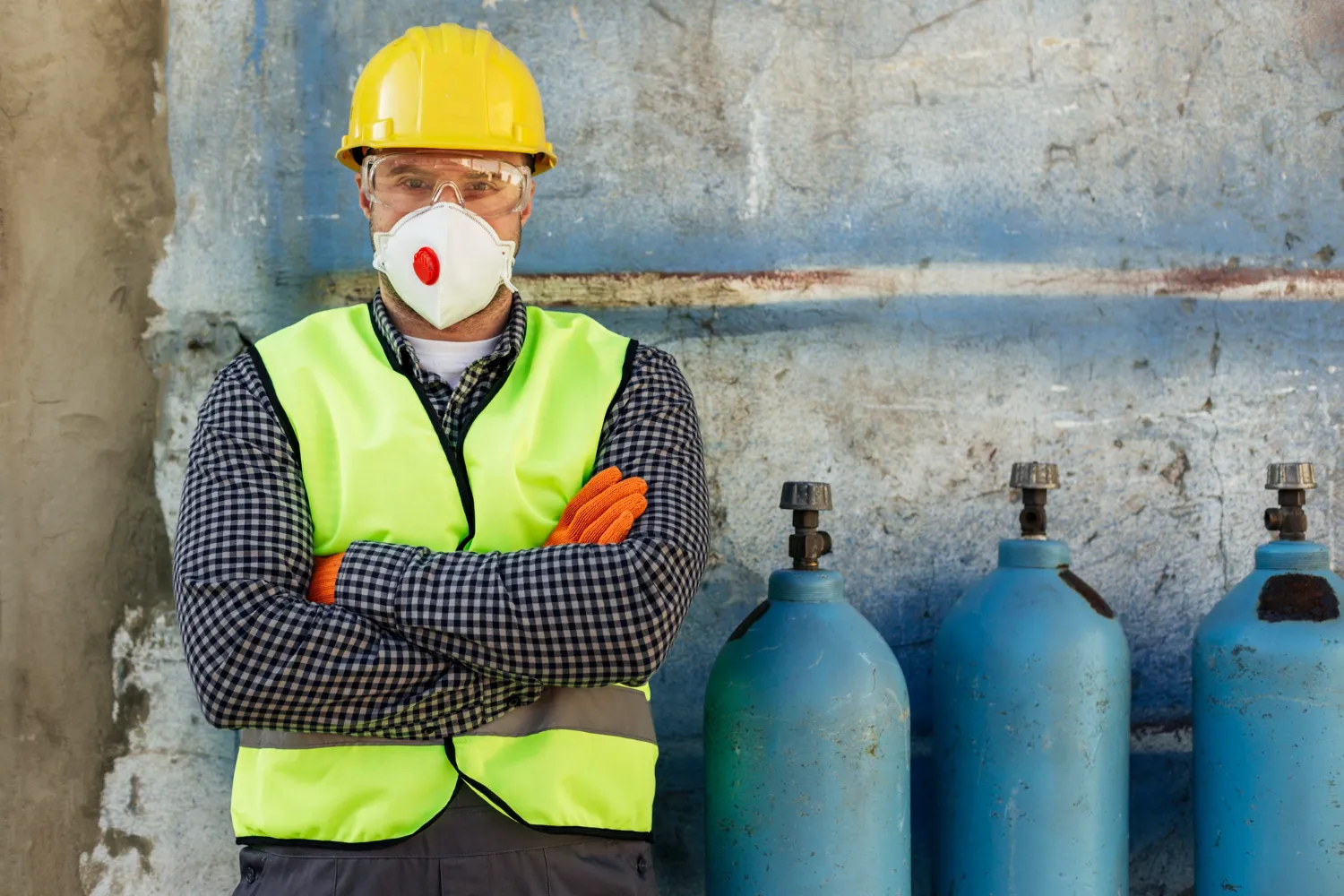The Importance of Gas Test Atmospheres Training in Confined Space Work

Confined spaces can be among the most challenging. And dangerous environments in many industries. These tight spots can harbour a multitude of hazards. Including, most notably, toxic, flammable or explosive gases, and oxygen-deprived atmospheres. Safety measures are paramount in these high-risk areas to prevent tragic accidents. One such safety measure, and the focus of this discussion is Gas Test Atmospheres Training? This training prepares workers for the potential dangers associated with gases. In confined spaces, promoting safe and effective work practices. Let’s delve into the significance of this crucial training for anyone involved . In confined space work.
What is Gas Test Atmospheres Training?
Gas Test Atmospheres Training provides knowledge and skills to effectively identify, assess. And monitor atmospheric risks within confined spaces. The training is designed to equip workers with an understanding of various gases. Encountered in confined spaces. Potential hazards associated with these gases. And methods to safely monitor and control them.
This training is critical for anyone who works in an environment. Where gas hazards exist, such as miners. Maintenance workers, safety inspectors, utility workers, and more. It’s also beneficial for health and safety professionals responsible. For creating and maintaining safety protocols.
Why is Gas Test Atmospheres Training Crucial in Confined Space Work?
Confined spaces can house a variety of gases that could pose serious health risks. Or even result in fatal accidents. Three principal types of gases commonly encountered include:
- Oxygen Deficiency and Enrichment: Normal air contains approximately 21% oxygen. Levels below 19.5% are considered oxygen-deficient and can cause symptoms. Such as impaired judgment, unconsciousness, or death. Conversely, oxygen-enriched atmospheres (greater than 23.5%) . Increase the risk of fires or explosions.
- Flammable Gasses: These can cause fires or explosions. If they reach their lower explosive limit (LEL) within a confined space. Common examples include methane and hydrogen.
- Toxic Gases: These gases, such as carbon monoxide, hydrogen sulphide, or nitrogen dioxide. Can cause acute or chronic health effects, depending on the level. And the duration of exposure.
The lack of knowledge about these gases can lead to serious accidents and fatalities. Gas Test Atmospheres Training. Therefore, is a crucial aspect of maintaining safety in confined spaces. It ensures workers can appropriately identify. Monitor, and control gases, thereby reducing risks and improving overall safety.
The Benefits of Gas Test Atmospheres Training
At Vertical Horizon, our Gas Test Atmospheres Training aims to provide several benefits:
- Preventing accidents and preserving life: This is the most important aspect. The training equips workers with the skills to detect and manage gas-related hazards. Thereby preventing potential accidents and preserving life.
- Enhancing workers’ skills and confidence: With adequate training. Workers become proficient in using gas detection equipment and managing potential hazards. This not only increases their skillset but also boosts their confidence. Ensuring they can respond appropriately in high-risk situations.
- Ensuring compliance with safety regulations: Understanding gas testing helps businesses. Comply with health and safety regulations, avoiding legal repercussions and potential penalties.
- Improving productivity and minimising downtime: By preventing accidents. Businesses can avoid unnecessary work stoppages and maintain productivity levels. Furthermore, confident and competent workers are likely to perform better. Contributing to enhanced productivity.
Case Study: Real-Life Applications of Gas Test Atmospheres Training
To emphasise the importance of Gas Test Atmospheres Training. Let’s consider a real-life situation. In a large wastewater treatment plant. A maintenance worker was assigned to work inside a digester tank. A confined space is known for potentially hazardous gas build-up. The worker had completed his Gas Test Atmospheres Training with Vertical Horizonz, which played a critical role in this assignment.
Before entering, the worker conducted. A comprehensive gas test using the skills learned during the training. The test revealed high levels of methane and hydrogen sulphide. A dangerously toxic and flammable environment. Due to his training, the worker recognised the risk, exited the area, and reported the issue.
Thanks to the training, a potentially catastrophic situation was averted. The training not only ensured the worker’s safety. But also safeguarded the plant from a potential disaster. This incident emphasises the pivotal role of Gas Test Atmospheres Training. In confined space work.
How is Gas Test Atmospheres Training Conducted?
At Vertical Horizonz, we provide in-depth and hands-on Gas Test Atmospheres Training. Comprising theoretical and practical aspects:
- Theoretical Aspects: This includes understanding gas hazards. Learning about gas detection techniques and equipment, and interpreting results. The training also covers different gases, their properties, potential risks, and safety measures.
- Practical Aspects: This involves hands-on experience with gas testing equipment. Trainees learn how to operate the equipment, conduct gas tests. Interpret results, and respond appropriately to different scenarios in a controlled environment.
The Role of Continuous Learning in Gas Test Atmospheres Training
While initial training is essential, the field of gas detection. And monitoring is continually evolving, making continuous learning equally important. Regular refresher training ensures workers stay up-to-date. With the latest technologies, techniques, and best practices.
Employers, too, have a role to play here. By providing continuous learning opportunities. They can ensure their employees maintain their competence. And readiness in managing gas-related hazards in confined spaces.
Conclusion
In confined space work, Gas Test Atmospheres Training. Is not a mere requirement – it is a life-saving necessity. It empowers workers with the knowledge and skills needed to operate safely. Contributing to a safer and more productive workplace.
At Vertical Horizonz, we remain committed to providing comprehensive, up-to-date, and practical training. We firmly believe that with the right knowledge and skills. Every worker can contribute to creating a safer work environment. After all, safety is not just a regulation, it’s a responsibility.
FAQs
1. What is a confined space, and why is it considered dangerous?
A confined space is defined as an area not designed for continuous occupancy. That has limited means of entry and exit and could potentially. Contain hazardous substances or dangerous conditions. These spaces include tanks, silos, pipelines, sewers, and more. The risks in confined spaces. Can arise from toxic gases, oxygen deficiency or enrichment. Flammable or explosive atmospheres, as well as physical hazards like falls or entrapment.
2. Who needs to undertake Gas Test Atmospheres Training?
Anyone who is required to work in a confined space where gas hazards might exist. Should undergo Gas Test Atmospheres Training. This can include a range of roles such as maintenance workers, utility personnel. Safety inspectors, miners, and even health. And safety professionals are responsible for formulating safety protocols.
3. What are some of the skills acquired from Gas Test Atmospheres Training?
Gas Test Atmospheres Training imparts skills in identifying. And assessing potential atmospheric risks within confined spaces. Participants will learn about the different types of gases they might encounter. The hazards associated with these gases, and how to monitor and manage these risks. They will also gain hands-on experience in using gas detection equipment. And interpreting the results.
4. What kind of gases might I encounter in confined spaces?
In confined spaces, you may encounter gases such as methane, hydrogen. And carbon monoxide, which can be flammable or toxic. Oxygen-deficient or oxygen-enriched environments can also be hazardous. The exact gases you encounter will depend. On the nature of the confined space and the activities performed within it.
5. How often should Gas Test Atmospheres Training be refreshed?
Refresher training should be done regularly. To ensure workers are up-to-date with the latest techniques, technologies, and best practices. The frequency of refresher training can depend on the nature of the work. And the specific regulatory requirements. However, it’s typically recommended to refresh training at least every 2-3 years.
6. Why is Vertical Horizonz the preferred provider for Gas Test Atmospheres Training?
At Vertical Horizonz, we’re committed to providing comprehensive. And practical training that meets industry standards. Our training combines theoretical knowledge with hands-on experience. Ensuring participants are ready to manage real-world scenarios effectively. Our dedication to continuous learning and our understanding of evolving technologies. And practices makes us a trusted partner in your safety training needs.
-
6 Career Advancements Enabled by Completing a White Card Training Course
November 06, 2023
-
7 Career Opportunities Unlocked by a Working at Heights Certification
October 24, 2023
-
7 High-Paying Jobs You Can Get with a GWO Training Certification
October 20, 2023
-
Top 7 Career Advancements After Completing a High Pressure Water Jetting Course
October 18, 2023
-
5 Essential Techniques Taught in High Pressure Water Jetting Courses
October 18, 2023
-
7 Career Opportunities after Completing Vacuum Loading Training
October 17, 2023







